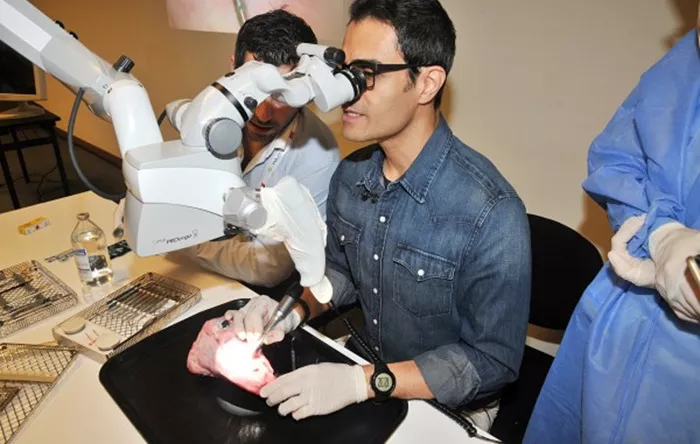Microscopic dentistry pioneer becomes first Asian co-author in major global textbook on implantology.
Dr. Behnam Shakibaie, an acclaimed expert in oral surgery, implantology, periodontology, and microscopic dentistry, has made history in the dental field. He is now the first Asian scientist to co-author a chapter in a leading international textbook on implant dentistry, setting a new world record in the process.
Dr. Shakibaie’s contribution appears in Esthetic Implant Surgery, a highly anticipated textbook published by Quintessence Publishing in partnership with the International Federation of Esthetic Dentistry (IFED). The book compiles cutting-edge surgical techniques from leading experts around the world and is considered a key resource for dental professionals and postgraduate students in oral implantology.
In Chapter 5, titled Implant-related Sinus Augmentation Procedures, Dr. Shakibaie joins Italian professors Tiziano Testori and Riccardo Scaini to explore surgical methods for sinus augmentation—a vital procedure for patients who lack sufficient bone height in the upper jaw.
What sets this chapter apart is Dr. Shakibaie’s focus on his minimally invasive, microscope-guided sinus lift techniques. Developed through years of clinical experience and research, his approach uses high magnification and specialized tools to reduce patient trauma, shorten recovery times, and enhance surgical accuracy. His methods offer a new standard for esthetic outcomes and functional success in implant dentistry.
This achievement not only marks a personal milestone for Dr. Shakibaie but also highlights the growing influence of Asian researchers in the global dental community. His inclusion in this textbook signals a shift toward greater recognition of innovation coming from diverse regions.
The textbook’s release is expected to shape the future of dental education and clinical practice worldwide. Dr. Shakibaie’s work exemplifies a shift in modern dentistry—one that favors patient-centered care, precision, and minimally invasive techniques.
As more dental professionals adopt these advanced methods, Dr. Shakibaie’s contributions will likely serve as a guide for integrating technology and esthetics into everyday practice. His recognition also underscores the importance of scientifically validated techniques that put patient comfort and long-term results first.
In an era where dentistry is becoming increasingly interdisciplinary, Dr. Shakibaie stands out as a leader connecting research, innovation, and clinical excellence. His work continues to inspire both his peers and the next generation of dental professionals around the globe.

